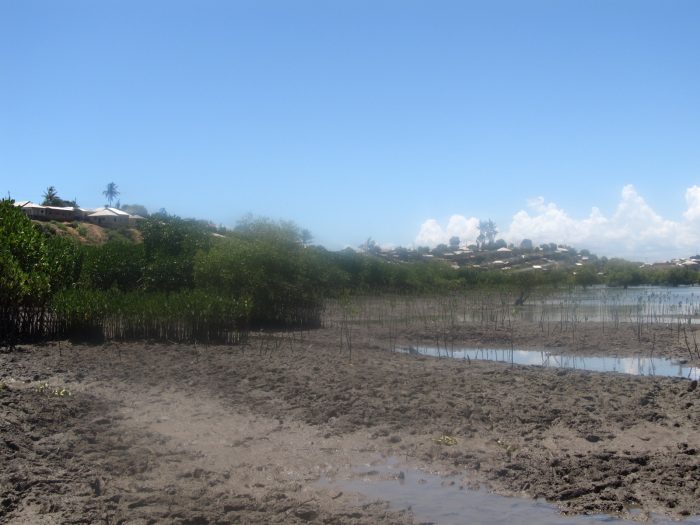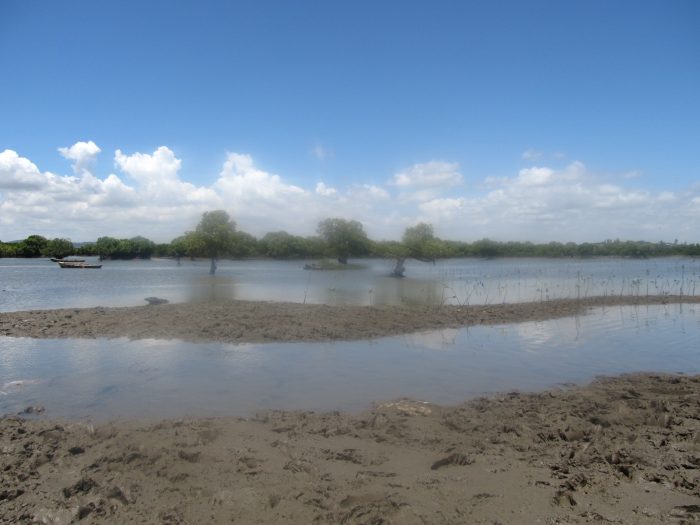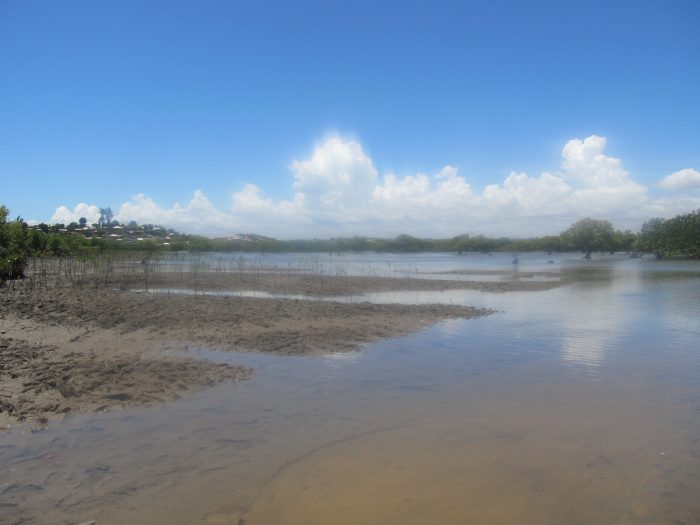Date: 30/04/2025
Author: Clara Girault, University of Southampton,
Bio:
Clara Girault is a second-year PhD student at the University of Southampton in Social Statistics and Demography and funded by the South Coast Doctoral Training Partnership. Her research focuses on the estimation of hidden suicide in high-income countries’ official statistics, and more specifically on predictive methods using multiple causes-of-death and socio-demographic information found in death certificates.
Introduction
While doing a placement at the end of 2024, I had the opportunity to participate in the South Coast Doctoral Training Partnership (SCDTP) research trip to Mombasa. As a demographer, a decolonial approach is crucial when working with Low and Middle-Income Countries (hereafter LMICs). Although I am currently working on High-Income Countries (HICs), my research interests focus on standardising methods of reclassification for unknown and ill-defined causes of death, which would allow application to other geographies and contexts. Hence, this trip was a first for me, a big step – it encouraged me to continue working on methodological aspects while opening to multidisciplinary approaches to ensure the acknowledgement of both the history of colonialisation and qualitative perspectives.
In this blog I share how the trip reflected my research interests and how, as a very quantitative-focused researcher, I now wish to include qualitative aspects in my research. I want to share here mostly the reflection that came from the presentation we actively listened to and the discussions I had with my fellow researchers, all coming from different backgrounds and all having different research interests.
Qualitative insights for a quantitative researcher
As previously mentioned, I am a quantitative researcher from a very quantitative background, from HIC studying HIC. I am coming from a data-driven perspective. In preparation for this trip, I read a lot of articles, listened to numerous podcasts, and scrolled through forum discussions or more informal takes on blogs – most of which introduced me to completely new names, new terms, and new perspectives. It was wonderful to learn outside of the scope of my research, and I might admit it was somehow scary to step outside my knowledge bubble – exciting, yes, but a little bit intimidating. I felt like an outsider in comparison to the other PhD students, but also that my research interests were welcomed. Many of the other PhD students had backgrounds in qualitative research or are currently writing a thesis focusing on LMICs and dedicate a share of their thesis to decoloniality. I was unsure how my own work would fit into the conversations we were about to have. But very quickly, I realised that my unfamiliarity added something valuable to the mix.
Daily, my work is all about numbers. I see 0s and 1s, datasets filled with people who died from violent deaths with crude injury details. I compute rates, run statistical models, refine classification methods, and question reliability. Sure, there is always interpretation and discussion. I understand the context of the countries I study, the process of death registration and the regional differences. But at the end of the day, the numbers are what drive my research. And honestly? That can be desensitising.
My disconnection to field reality in comparison to my peer group SCDTP-funded PhD students hit me during a conversation with Dr Anangwe (whom I will forever thank) about Kenya’s death registration system. We talked about how historical and cultural factors shape the way deaths are recorded, the taboo of suicide and drug-related death in communities – all those things my models cannot fully capture. It made me realise how much I have been looking at this issue from a distance, focusing on how to “fix” classification (in a very technical sense and a very HIC perspective) without really considering the deeper context behind it. In my mind, this discussion is still going on.
This feels especially relevant as I write these lines, with the Trump Administration having paused the Demographic and Health Surveys (DHS) program—a major data source for demographers and social scientists working on LMICs. Given this shift, it is more important than ever to acknowledge the asymmetric dynamics behind data and to think critically about how they are collected, classified, completed, and analysed. Bringing a decolonial perspective to these processes is not just a theoretical exercise; it is essential for making sure the inequalities in global data do not keep reinforcing themselves. I truly hope that I will be able to adapt and apply the work I have done during my PhD to LMICs.
Remote sensing output and field reality
During the visit, I was part of the Environmental strand. It might sound surprising as I am technically a suicide expert that my academic background is actually in environmental geography. I previously did remote sensing or aerial photography analysis and worked on forest cover, focusing mostly on the Pacific Islands. I also worked on maritime settings, studying the impact of diploid oyster parks on a rural coastal landscape. Thus, when our strand leader presented to me the Tudor Creek mangrove reforestation project, I was deeply interested (Isaac’s blog on the Tudor Creek and its innovative resilience in a decolonising setting can be found here: https://southcoastdtp.ac.uk/decolonising-and-innovating-in-ecological-resilience-at-tudor-creek-mombasa/). I tried to use my remaining knowledge of environmental geography techniques to visualise the differences between old and newly restored mangrove forests. I can share it with you with confidence: It is difficult to dive into geographic information system methods after years of ignoring QGIS updates. Nevertheless, what about the mangroves?

The Tudor Creek mangrove is settled in a peri-urban area. We met Mbaarak Abdalla and the reforestation project team, who gave us a warm welcome and taught us about many new things: the calendar differences in mangrove planting, varieties and how to recognise the different species of mangroves, techniques of planting mangroves, the importance of beekeeping in the community, and more. They involved us in a tree planting session where we were offered the opportunity to learn how reforestation is done at its roots. The work done at Tudor Creek not only supports the environment and the biodiversity and aims to meet the Sustainable Development Goals; it also supports local communities and creates new opportunities for future generations.
Seeing the mangroves firsthand, speaking with the women and men involved in the project, and gaining a deeper understanding of the social and environmental impacts – beyond the “tree cover percentages” or the “normalised difference vegetation index share cover” that I had learned as a geography undergraduate – helped shift my perspectives toward qualitative understanding.
Additionally, the presentation by Dr Downie on her reflections on the challenges faced by and with communities as an International Development Practitioner, and the following more informal discussions, were a good reminder of the consideration that must be taken in aid projects. Truly something I missed during my undergraduate education, which was often oriented toward technical skills. When planning for this strand, we were initially thinking of helping to produce a visual media using aerial images and videos, but due to the restriction of drone imports to Kenya, we went in the direction previously mentioned. The SCDTP-funded volunteering and presentation at the Tudor Creek revived my interest in geographical analysis. Being on the field was a completely different experience from making geography through GIS. Ideas for technical support have germinated (literally) in my mind, and my discussions with Mbaarak in this regard were insightful.
To conclude
This trip made me realise that qualitative perspectives are not just a nice add-on to data-driven quantitative research – they are essential. In Mombasa, I not only had an academic field experience but also experienced a turning point in how I approach research. It made me realise that engaging with qualitative perspectives, whether through conversations on death classification in Kenya or hands-on experiences in environmental resilience, has broadened my understanding of what data is and what it represents beyond the numbers. Lived realities and experiences of life (and death for me) are shaped by history, by culture, and by as many dynamics as there are scales. As I move forward in my academic path, whether my future research will focus on LMICs or not, I aim to be more intentional about integrating these new-to-me decolonial perspectives. The SCDTP-funded trip to Mombasa was a step in that direction.
As I wrote a lot on my perspective as an “HIC on HIC” mortality researcher, I wanted to conclude with a statement I took home (i.e., on my PhD research): understanding why deaths are classified the way they are is not just about statistical models and predicted probabilities; it is about the people who record, interpret, and experience these classifications, it is about who died and where, all in a variety of institutional administration systems, practices, and historical legacies.


